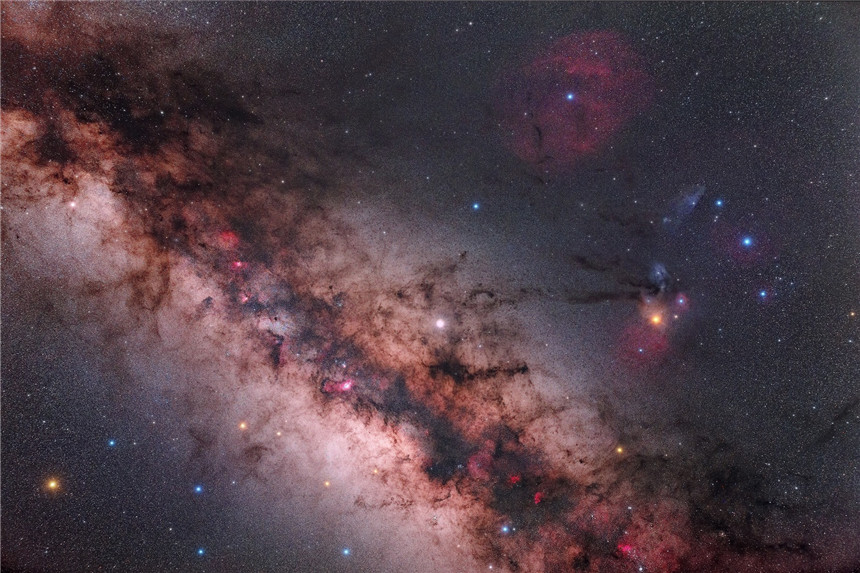
Optolong L- Pro Full Frame Clip-In Filter Review
Dan Higgins and Tyler Bowman
Living in a light-polluted area (the part of Long Island where I live is a Bortle 8+ sky) is usually a very difficult challenge. In order to attempt to combat this challenge, we were able to obtain the L-Pro EOS-FF filter from Optolong. I am curious to see if the L-Pro would do just as good a job as other broadband light pollution filters that I own.
I have used the Baader Moon and Skyglow filter for many years and have been pleased with its performance. From reading other reviews, I expect the L-Pro to show decent results. But first, what is a light pollution filter and what does it do?
What does a light pollution filter do?
A light pollution filter can help in moderately light-polluted areas to block certain wavelengths of light caused by the Sodium and Mercury vapor lights many of us use as streetlamps. One-shot color cameras and DSLRs pull in all the light that you see from the Violet side of the spectrum at 400 Nanometers(nm) to the red at 700 nanometers(nm).

Let’s put a visual aid here.
Here is what the light pollution filter does. The glass and coatings are configured in a way that blocks certain wavelengths of light from reaching your sensor. In this graph of the Optolong L-Pro filter, you can see the red line dips right at the yellow lines. The yellow lines signify the bandpasses of Mercury and Sodium. Mercury emits light at different wavelengths (435.8nm, 546.1nm, 577nm, and 578.1nm) Sodium emits light at 598nm, 589.6nm 615.4nm, and 616.1nm.
You can see from the graph that the filter blocks the correct wavelengths, therefore, blocking the light pollution and boosting the contrast of the object you are looking at!
Let’s take a look at the filter itself. Since this is for a flat frame EOS R, it is bigger than the standard clip-ins and not circular. They are square to fit the chassis of the EOS-R camera. It also comes with a nifty guitar pic that helps with the removal of the filter. The filter fits nicely and solidly in the chassis.
FYI, I do not recommend stacking the L-Pro if you’re doing monochrome LRGB Imaging. It can offset the color balance.
Keep in mind that many RGB filters have transmission cut offs where you do get some beneficial Light pollution emission blocking!
Who needs the Optolong L-Pro?
Don’t get us wrong. There is no substitute for light pollution gradient removal other than going to a darker sky! However, if you’re like the majority of the astrophotographers out there, we don’t have that luxury (Dan shoots from Bortle 8+ and Tyler from a Bortle 6).
The Optolong Full Frame clip-in comes for both Canon, Nikon, and Sony. If you have one of those full-frame DSLR cameras, then this can be a great solution for your light pollution woes.
If you don’t have a full-frame DSLR camera that’s ok. The L-Pro comes in Clip-in Formats for APS-C Canon DSLRs as well. If that doesn’t float your boat, they also come in 1.25”, 2”, and M77 too!
From the details that Tyler was able to get, I am sure we can see the benefits of using a Light Pollution solution like the Optolong L-Pro! We did!
